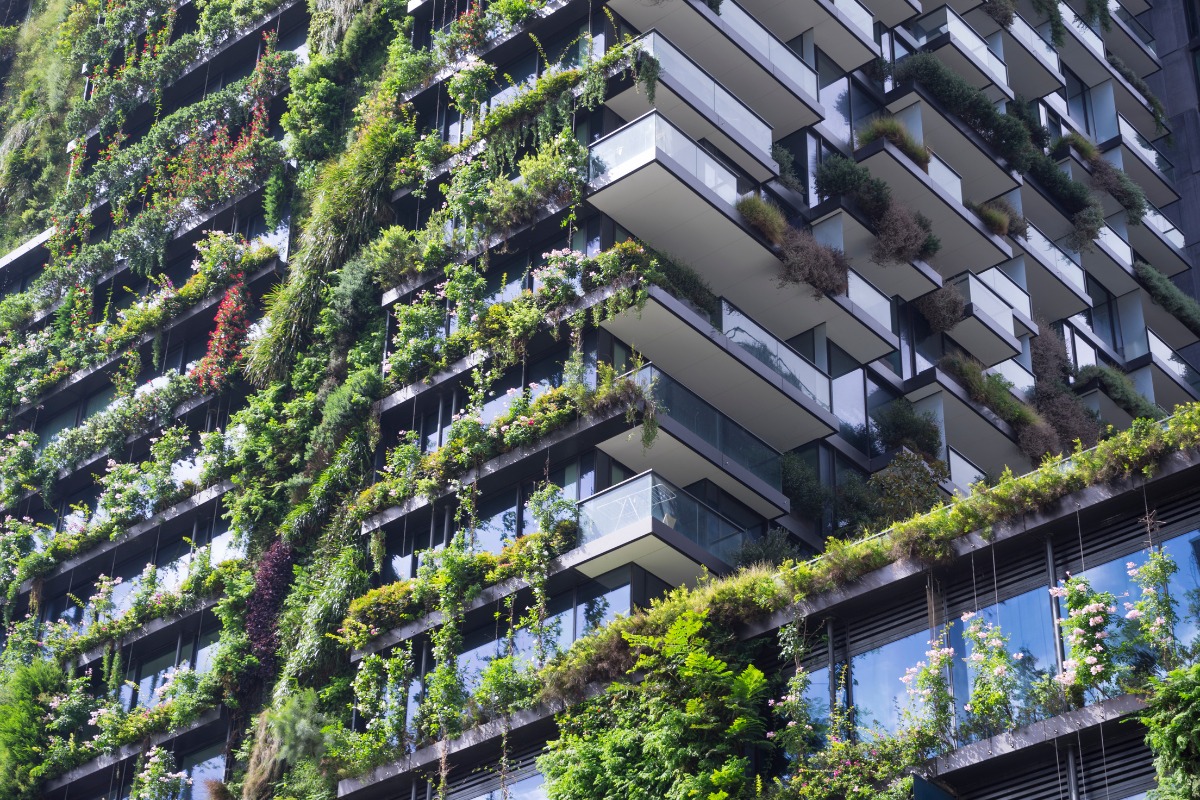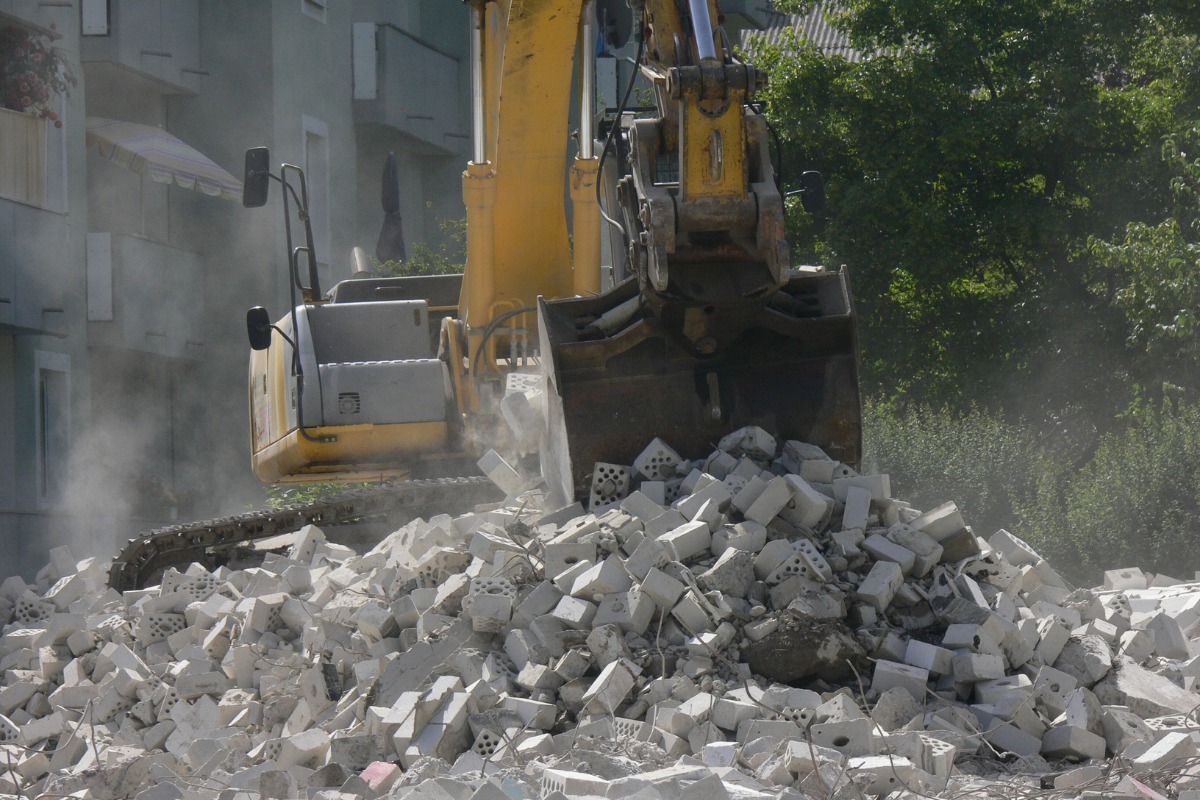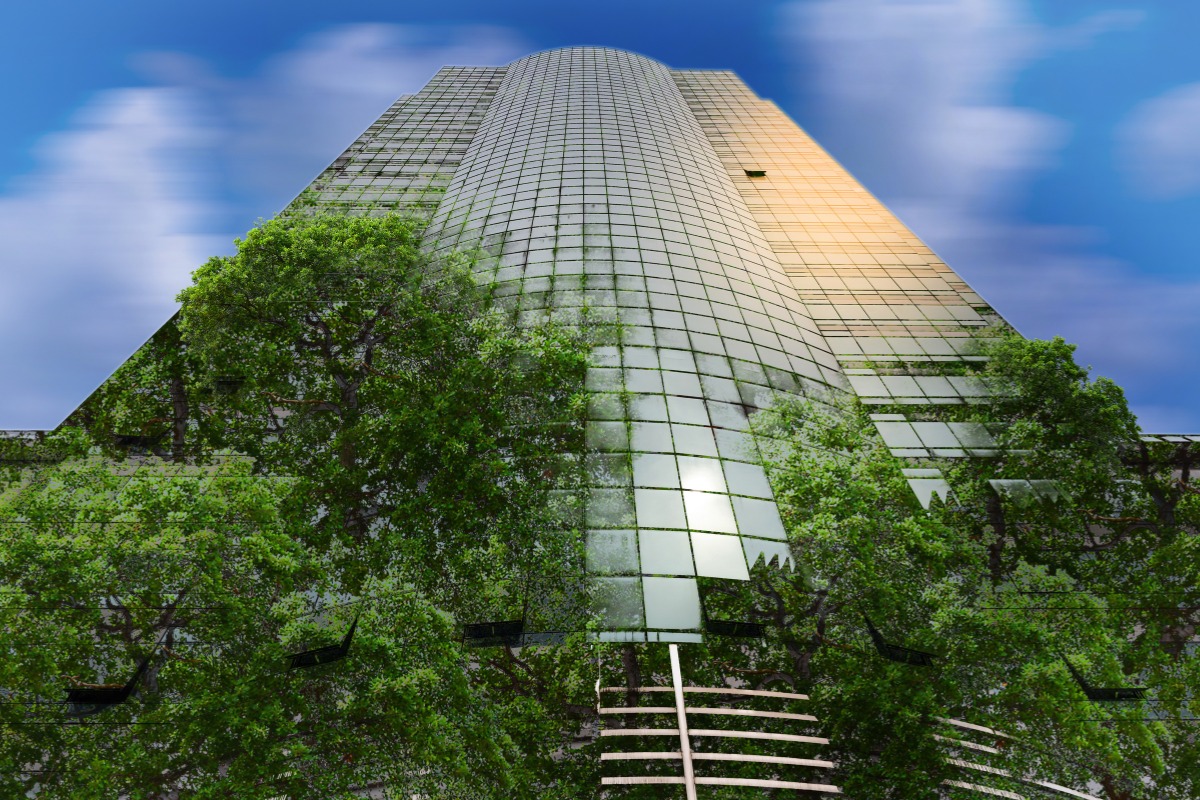In our pursuit of a harmonious balance between modern living and environmental stewardship, the movement towards eco-conscious construction is not just a trend but an essential shift in how we think about our homes and cities. Eco-conscious construction integrates sustainable homes into the urban fabric, grounding our growth in environmentally friendly construction principles. Our commitment to ecological construction embodies our respect for the planet, ensuring that green construction methods are at the core of our practices. By weaving sustainability into the very framework of new developments, we’re crafting a legacy that’s as green as the structures themselves—a testament to innovation, responsibility, and foresight.
Key Takeaways
- Incorporating eco-conscious construction is crucial for sustainable living and urban development.
- Building sustainable homes offers both environmental and economic benefits.
- Environmentally friendly construction practices lead to healthier living spaces.
- Ecological construction is a responsible choice that contributes to a sustainable future.
- Adopting green construction methods is imperative for reducing our carbon footprint and conserving natural resources.
The Rise of Eco-Conscious Construction

As we witness a paradigm shift in the construction industry, the term ‘green construction methods’ has surged from a niche concept to a fundamental pillar in today’s architectural practices. This inexorable march towards sustainable building practices is characterized by a conscious effort to harmonize our built environment with the natural one. It’s our collective response to the urgent need for an eco-friendly blueprint for the way we shape our living spaces.
Defining Green Construction and Its Advantages
In the heart of sustainable architecture lies green construction. This philosophy endeavors to reduce the environmental impact traditionally associated with construction endeavors. It places a spotlight on eco-friendly materials and emphasizes the significance of utilizing renewable resources. Eco-conscious construction not only reflects our respect for the environment but also manifests numerous advantages, such as improved health and well-being for inhabitants, a reduction in operating costs, and a leap towards a resilient infrastructure capable of enduring the challenges of the future.
Transitioning from Traditional to Sustainable Building Practices
The journey from conventional construction to green building is more than just a trend; it’s a comprehensive transformation. The industry is currently experiencing a renaissance in green architecture education, spawning an array of innovative practices that promise to redefine our skyline. These methods aim to diminish the ecological footprint of our structures, from their foundation to the entire lifecycle, ensuring their operation harmoniously coexists with the earth’s biosphere. Through our commitment to sustainable building practices, we are laying the groundwork for structures that not only stand the test of time but do so in an ethically responsible manner.
Cost-Efficient Operations in Sustainable Architecture
As sustainability champions, we understand the value of energy-efficient construction that significantly reduces operation costs and extends the longevity of buildings. The integration of innovative features such as daylight maximization and low-flow fixtures is a testament to the forward-thinking designs that underscore the financial benefits of sustainable architecture. These energy and water-saving advancements lead to cost savings that reflect on monthly utility bills, providing immediate returns on investment to property owners.
One cannot overemphasize the importance of lower building maintenance expenses when considering the lifespan cost of a structure. By choosing materials and systems designed for longevity and resilience against wear and tear, the need for frequent repairs and replacements diminishes, further contributing to the cost efficiency of green buildings. Let’s review a comparison of conventional and sustainable architecture to illustrate the long-term economic gains.
| Aspect | Conventional Building | Sustainable Building |
|---|---|---|
| Energy Consumption | Higher operational energy leads to increased costs. | Reduced demand through efficiency, leading to lowered expenses |
| Water Usage | Standard fixtures with higher water flow rates | Low-flow fixtures and sustainable landscaping decrease water bills. |
| Maintenance | Frequent due to less durable materials | Less frequent owing to durable, high-quality materials |
| Overall Lifetime Cost | Higher due to increased repair and utility costs. | Lower owing to efficient resource use and savings on utilities |
When assessing the potential for rent or resale value, green buildings stand as lucrative investments. Not only do they attract tenants and buyers willing to pay a premium for environmentally conscious living spaces, but they also promise reduced operation costs and maintenance. In essence, the initial investment in energy-efficient construction and lower building maintenance pays off manifold, ensuring economic vitality for both the investor and the occupant.
Eco-Conscious Construction Methods for Energy Efficiency

As champions of eco-conscious construction, we prioritize methods that bolster energy efficiency. Such advancements encompass the adoption of renewable energy sources, including solar panels, and making optimal use of natural light. This strategy not only contributes to a sharper decline in energy waste but also aligns with a deeply held commitment to environmental stewardship.
Integrating renewable energy resources
The integration of renewable energy sources plays a pivotal role in our sustainable construction plans. By harnessing solar energy, we are adept at installing solar panels that provide a clean, inexhaustible power supply. This shift towards renewables is instrumental in diminishing our reliance on fossil fuels and propelling us towards a more sustainable future.
Passive Design Principles and Their Impact on Usage Reduction
Passive design principles are at the core of our energy conservation efforts. Through meticulous planning and design, we ensure that buildings capture, store, and distribute natural light efficiently. Our designs feature proper insulation and air sealing alongside energy-efficient windows, minimizing heating and cooling demands and thereby reducing energy consumption. This conscientious approach to construction dramatically cuts energy waste, underpinning our dedication to diminishing environmental impacts and fostering cost savings for occupants.
Indoor air quality and occupant well-being
We understand the profound impact that indoor air quality has on occupant health and productivity. In our commitment to improved indoor environment quality, we’ve observed significant advancements through eco-conscious construction. By selecting materials that contribute to VOC reduction, the air within our green buildings remains cleaner, safeguarding the health of those who inhabit these spaces.
Biophilic design plays an integral role in not only enhancing the aesthetic appeal of a space but also in merging nature with built environments to improve occupant productivity. The infusion of natural elements into building design has been shown to lower stress levels and create a more harmonious and productive environment.
To further contextualize the benefits, let’s examine a comparative table detailing the positive effects of adopting these practices:
| Feature | Benefits | Impact on Well-Being |
|---|---|---|
| Low-VOC Materials | Reduces exposure to harmful chemicals | Enhances respiratory health |
| Natural Lighting | Optimizes light quality and conserves energy. | Improves mood and circadian rhythm |
| Advanced Ventilation Systems | Ensures steady circulation of clean air | Promotes cognitive function and comfort |
| Biophilic Elements | Integrates natural components into design | Reduces stress and fosters tranquility |
Ultimately, attention to air quality and thoughtful design not only protect the environment but also propel us towards a future where buildings contribute to the health and efficiency of their occupants.
Conserving Water through Eco-Friendly Materials and Techniques
Water is a cornerstone of life—vital for both our communities and the environment. In our endeavor to promote eco-conscious construction, we prioritize water efficiency and the integration of alternative water sources. By implementing innovative systems and practices, we aim to substantially reduce our ecological footprint while enhancing the sustainability of our projects.
Water-saving fixtures and sustainable landscaping
Recognizing the impact of daily water usage, we advocate for the installation of water-saving fixtures such as low-flow toilets and showerheads in our construction projects. Alongside these fixtures, sustainable landscaping plays a pivotal role. By selecting native plants and employing efficient irrigation systems, like drip lines and smart sprinkler technology, we create visually stunning landscapes that require minimal water input.
- Low-flow fixtures: They diminish water flow without affecting performance, leading to significant water conservation.
- Native plants are adapted to local environmental conditions and require less water and maintenance.
- Drip irrigation directs water precisely to the plant roots, minimizing evaporation and runoff.
Innovations in Water Recycling Systems
Our commitment extends beyond conservation to the realm of water recycling. Advanced systems, such as greywater networks and rainwater harvesting tanks, are making impressive strides in sustainable building practices. These technologies provide an alternative water source by treating and reusing mildly used water for landscaping and flushing toilets, thereby easing the demand for municipal water supplies.
| Water Recycling Technique | Applications | Benefits |
|---|---|---|
| Greywater systems | Reusing water from sinks, showers, and washing machines | Reduces freshwater consumption, lowers utility costs |
| Rainwater harvesting | Collecting rainwater for on-site usage | It minimizes runoff, replenishes local aquifers, and reduces the demand for municipal water. |
As we embrace these water-centric innovations within our construction processes, we not only enhance water efficiency but also foster resilience and sustainability within our urban environments. Through the strategic application of alternative water sources, sustainable landscaping, and water recycling, we are redefining our relationship with one of our most precious resources—ensuring a legacy of water stewardship for future generations.
Advancing Material Efficiency in Construction

In our quest to promote environmentally friendly construction, we are committed to being at the forefront of material efficiency. This pivotal shift entails not only selecting sustainable materials but also enhancing resource efficiency to mitigate the impact on the environment. By meticulously reducing construction-related waste, our practices are aligned with an ethos of sustainability and responsibility towards the planet.
To effectively reduce material waste, we employ construction methods designed to minimize excess and repurpose scraps. Techniques such as modular building lead to more controlled and efficient use of materials, providing the double benefit of speedier construction timelines alongside environmental stewardship. Incorporating durable materials, requiring less maintenance, and generating less waste underscores our commitment to the principles of resource efficiency.
Optimising the lifecycle of building materials is not an option but an imperative in today’s construction industry, striving for a greener tomorrow.
Here’s an overview of how we prioritize sustainability in our material choices:
| Material Type | Features | Environmental Impact |
|---|---|---|
| Bamboo | Highly renewable, strong tensile strength | Low ecological footprint, biodegradable |
| Recycled Steel | Reduces the need for new material sourcing. | It reduces industrial waste and conserves energy. |
| Reclaimed Wood | Reduces deforestation, unique aesthetic | Prevents habitat destruction and promotes upcycling. |
| Low-VOC Paints | Improves indoor air quality | Reduces the release of harmful chemicals |
By embracing materials that are non-toxic, biodegradable, and recyclable, we are taking tangible steps towards an era of environmentally friendly construction. These sustainable alternatives not only perform on par with traditional materials but also pave the way for a healthier, more resilient built environment.
Increase in Property Value with Green Building Solutions
We understand that homeowners and investors are constantly looking for ways to enhance property value and secure a promising return on investment. Green building solutions have emerged as a key player in this arena, offering a multitude of benefits that translate into increased property value. Eco-conscious homes, now more than ever, are in high demand as people seek environmentally friendly spaces. The market for green homes is expanding, and those who adapt are seeing substantial benefits.
Long-Term Durability and Market Demand for Green Homes
The rise of green home market demand is unmistakable, as a growing number of homebuyers recognize the long-term value and durability these properties offer. The integration of high-quality materials that withstand the test of time means that green homes are less likely to require frequent repairs. This durability is a major selling point for prospective buyers who see the value of investing in a home that will stand up to the elements and maintain its aesthetic appeal for years to come, ultimately leading to increased property value.
Investment Benefits of Eco-Conscious Home Design
The tangible benefits of eco-conscious home design are evident not just in the short term but also when considering the return on investment over time. Energy-efficient features and renewable energy integrations lead to reduced operating costs, offering savings that accumulate significantly. Furthermore, the unique appeal of an environmentally friendly space cannot be understated in today’s market, where sustainability is a growing priority among homebuyers and real estate investors alike.
| Feature | Benefits | Impact on Property Value |
|---|---|---|
| Energy-Efficient Appliances | Lower utility bills, attract eco-conscious buyers | Increase in resale value, faster sales times |
| Renewable Energy Installations (e.g., Solar Panels) | Renewable energy tax credits reduce energy dependency. | Significant long-term savings and higher demand from buyers |
| High-Quality Sustainable Materials | Less maintenance and durability | Enhanced marketability and greater buyer interest |
| Water-Efficient Landscaping | Less water use, attractive outdoor spaces | Reduced utility costs, curbside appeal |
In summation, our commitment to developing environmentally friendly spaces not only fosters a healthier planet but also positions properties as lucrative investments with increased value in the ever-growing green home market. As we continue to navigate the dynamic landscape of real estate, the allure of eco-conscious home design proves to be a steadfast contributor to heightened property valuations and rewarding returns on investment.
Reducing the Environmental Footprint of Building Projects

As dedicated practitioners of eco-conscious construction, we aim to significantly lower the carbon footprint of our building projects. This critical step towards sustainable development ensures that every structure we create aligns with our vision for a future where environmentally friendly construction is standard practice. It’s about more than constructing with green materials; it’s a comprehensive approach that interweaves ecological construction principles throughout the lifecycle of a project.
- Utilization of renewable resources to mitigate non-renewable energy consumption
- Incorporating innovation to maintain the cleanliness and health of our environment
- Championing sustainable design and construction practices to combat climate change
- Preserving local ecosystems by sourcing materials responsibly
Our dedication is evident in how we manage a project from concept to completion, always mindful of our ecological impact. Through careful planning and implementation, we are redefining the construction industry’s role in forging a more sustainable and habitable planet.
Promoting Ecological Construction and Local Resource Management
At the heart of urban development, ecological construction and local resource management are key drivers in creating harmonious living environments. We prioritize incorporating green building solutions that support the well-being of our communities and contribute to a more sustainable future. These initiatives are essential in reducing the impact on local utilities and fostering responsible use of resources.
Alleviating Strain on Local Utilities
It is our mission to lessen the pressure on local utilities through the deployment of energy-efficient systems and water conservation measures. Our green building solutions are designed not only to provide immediate benefits to property owners but also to ensure the long-term sustainability of local infrastructure. By doing so, we help ensure that local energy and water supplies are used more efficiently, promoting stability and resilience in our urban landscapes.
| Green Solution | Benefit | Impact on Local Utilities |
|---|---|---|
| Solar Panel Installations | Reduction in electricity demand | Decreased strain on the electrical grid |
| Graywater Recycling Systems | Lower water waste | Conservation of local water resources |
| LED Lighting | Less energy consumption | Reduction in peak demand charges from power companies |
| High-Efficiency HVAC | Improved climate control with less energy | Stabilized energy use patterns |
| Green Roofs | Added insulation and reduced runoff | Lessened impact on stormwater systems |
Environmental Stewardship in Urban Development
Our approach to ecological construction is deeply entwined with environmental stewardship. By carefully managing local resources, we play a pivotal role in preserving natural habitats and biodiversity within urban areas. Our commitment to green building solutions ensures that as we expand and develop, we do so with the utmost respect for the environment, safeguarding it for future inhabitants.
- Enhancing green space within urban areas to support local ecosystems
- Promoting the use of renewable materials to minimize environmental impact
- Adopting practices that reduce pollution and promote clean air
- Implementing construction methods that mitigate soil erosion and land degradation
Conclusion
As we reflect on the shift towards a more sustainable and responsible means of urban development, we recognize the significant strides made by leaders in the field, such as Premier Pro Builders. In Los Angeles, the eco-conscious movement is gaining momentum, transforming the construction landscape, and setting bold new standards for the future. We are witnessing a pivotal transition where green construction’s impact is no longer confined to environmental advocacy but is now an integrated part of the city’s dynamic growth.
The Future Landscape of Green Construction in Los Angeles
The vast expanse of Los Angeles serves as fertile ground for the seeds of green construction, where every sustainable home and eco-friendly building becomes a testament to a healthier, more resilient city. Our role in this transformation is critical, as we embrace practices that ensure a sustainable future, not only for ourselves but for the generations that will inherit this metropolis. It is our collective endeavor that will define Los Angeles as a paragon of ecological and architectural harmony.
Joining Premier Pro Builders in the Eco-Conscious Movement
Partnering with entities like Premier Pro Builders, we have the power to drive the eco-conscious construction movement forward. This collaboration invigorates our communities with the lasting benefits of reduced carbon footprints, lower operational costs, and improved quality of life. By supporting green construction impact and innovation, we contribute actively to a movement that is reshaping our city’s identity, propelling us towards a future where sustainable living is not merely an option but the cornerstone of urban development in Los Angeles.
FAQ
What is eco-conscious construction, and why is it important?
Eco-conscious construction is a holistic approach to building that minimizes environmental impact through the use of sustainable homes, environmentally friendly construction techniques, and ecological construction principles. It’s important because it helps reduce energy consumption, lower carbon emissions, and create healthier living spaces, all while being mindful of future generations.
How do green construction methods differ from traditional building practices?
Green construction methods focus on sustainability and utilize eco-friendly materials, whereas traditional building often prioritizes cost and time savings over environmental impact. Sustainable building practices aim to balance economic, environmental, and social responsibilities, leading to a reduced ecological footprint.
Can sustainable architecture save me money in the long run?
Yes, sustainable architecture reduces operation and maintenance costs through energy-efficient construction and cost savings from less resource consumption. This can result in significantly lower utility bills and create more cost-effective buildings over their lifespan.
How do renewable energy resources contribute to the energy efficiency of a building?
Renewable energy sources like solar panels can significantly reduce a building’s reliance on non-renewable energy. By harnessing natural energy, these systems can provide clean power, aid in energy waste reduction, and lower utility expenses.
Why is indoor air quality important, and how can eco-conscious construction improve it?
Indoor air quality is crucial, as it affects the health and comfort of occupants. Eco-conscious construction enhances air quality through reduced VOC emissions, biophilic design elements that connect occupants to nature, and by using materials that promote a safer, cleaner indoor environment.
In what ways can water be conserved in eco-conscious construction?
Water can be conserved by using water-saving fixtures, engaging in sustainable landscaping practices, and employing water recycling systems. These measures lead to improved water efficiency, help protect alternative water sources, and mitigate the demand for municipal water supplies.
What role do sustainable materials play in eco-conscious construction?
Sustainable materials support resource efficiency and help reduce material waste. By selecting durable, low-impact materials, we can lower the environmental burden and create a more environmentally friendly construction process that’s aligned with ecological construction goals.
How does investing in green home features increase property value?
Green homes often have increased property values due to their long-term durability, lower operating costs, and the growing market demand for environmentally friendly spaces. These features present a strong return on investment and make green homes an attractive option for buyers.
What are some steps eco-conscious construction takes to reduce a building’s environmental footprint?
Eco-conscious construction reduces a building’s environmental footprint by implementing lower carbon footprint strategies, sustainable development practices, and constructing buildings that have a minimal negative impact on the environment over their lifespan.
How does ecological construction support local resource management and utilities?
Ecological construction prioritizes the efficient use of local resources, alleviates strain on local utilities like water and power, and emphasizes environmental stewardship, ensuring that urban development is sustainable and responsible.
What initiatives are driving the future of green construction in Los Angeles?
In Los Angeles, initiatives driven by groups like Premier Pro Builders are advancing the eco-conscious movement with a focus on constructing energy-efficient buildings, resource-conserving, and promoting a sustainable future. This drives momentum for a broader acceptance of green construction methods in urban development.

